Organic gardening is a wonderful way to produce fresh, healthy produce while minimizing your impact on the environment.
However, for those who are new to gardening, the idea of growing plants without the use of chemical fertilizers and pesticides can be intimidating. The good news is that organic gardening is easier than you may think.
With a few simple tips and tricks, you can create a thriving garden full of delicious fruits and vegetables that are not only good for your body, but for the planet too.
In this article, we will guide you through the basics of organic gardening and provide you with tips to get started on your journey to a greener, more sustainable garden.
Key Takeaways from the article
- Understanding the Basics of Organic Gardening: Learn what organic gardening means and why it’s important for the environment.
- Choosing the Right Location for Your Organic Garden: Tips for selecting the best spot for your garden and how to ensure it gets enough sunlight, water, and proper drainage.
- Soil Preparation for Organic Gardening: How to prepare the soil for planting and why composting is an essential part of organic gardening.
- Plant Selection for Organic Gardening: Tips for choosing the right plants for your garden and how to avoid pests and diseases without using harmful chemicals.
- Natural Pest Control Methods for Organic Gardening: How to keep pests and diseases under control using natural and organic methods.
- Tips for Organic Vegetable Gardening: Specific advice for growing organic vegetables such as tomatoes, peppers, lettuce, and more.
- Organic Fruit Tree Care: How to care for and maintain organic fruit trees to ensure a bountiful harvest.
- Harvesting and Storing Organic Produce: Tips for harvesting fruits and vegetables at the right time and how to store them properly for maximum freshness.
- Composting for Organic Gardening: How to create your compost pile to provide your garden with rich, organic matter.
- Best Practices for Maintaining an Organic Garden: Tips for maintaining your organic garden and ensuring its continued success year after year.
Understanding the Basics of Organic Gardening
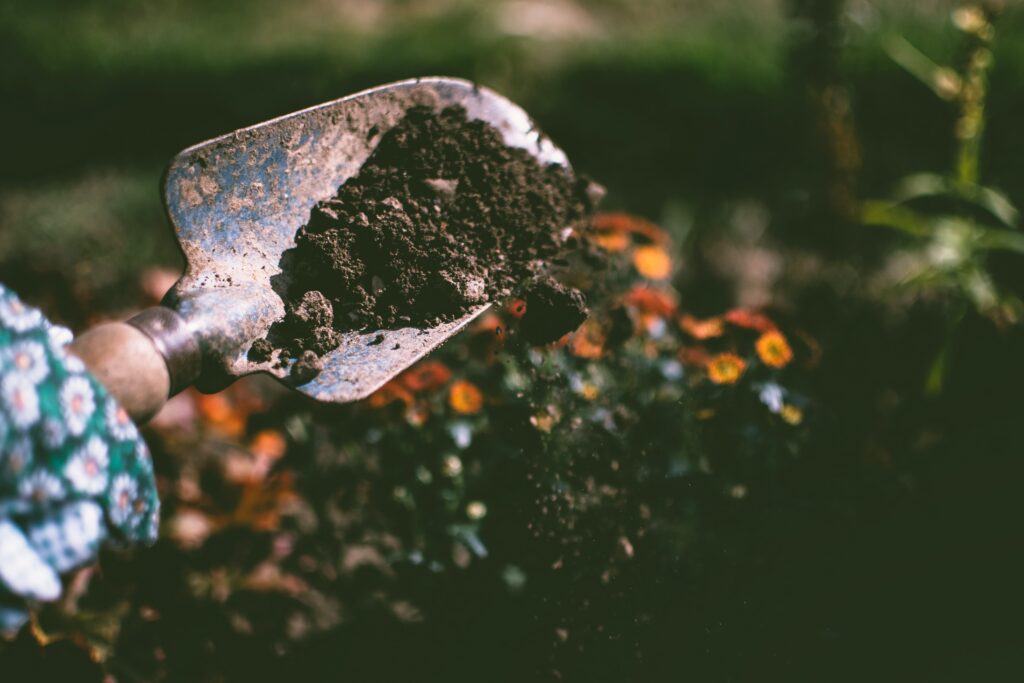
Organic gardening involves growing plants without the use of synthetic fertilizers, pesticides, or genetically modified organisms (GMOs). Instead, organic gardeners rely on natural and sustainable practices to promote healthy soil, plant growth, and ecosystem balance.
One of the key components of organic gardening is soil health. Healthy soil is teeming with beneficial microorganisms, such as bacteria and fungi, that break down organic matter and make nutrients available to plants. Organic gardeners often use compost, a mixture of decomposed plant material, as a natural fertilizer to improve soil health and fertility.
Another important aspect of organic gardening is pest and disease management. Instead of using synthetic chemicals to kill pests and diseases, organic gardeners rely on natural methods, such as companion planting, crop rotation, and beneficial insects, to keep their gardens healthy and thriving.
Organic gardening is not only good for the environment, but it can also produce healthier, more nutritious food. Studies have shown that organically grown fruits and vegetables contain higher levels of antioxidants and other beneficial nutrients than conventionally grown produce.
By understanding the basics of organic gardening, you can create a thriving garden that is good for both you and the environment.
Choosing the Right Location for Your Organic Garden
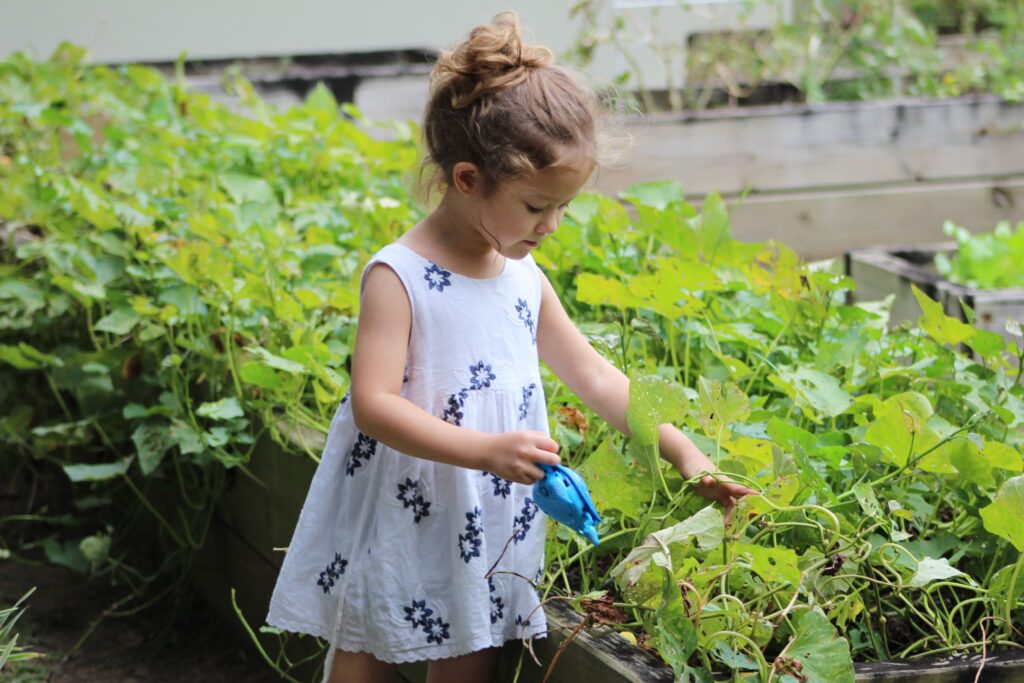
When it comes to growing a successful organic garden, choosing the right location is crucial. The ideal location for an organic garden should receive at least six hours of direct sunlight per day and have good drainage. This will help ensure that your plants receive the light and water they need to grow strong and healthy.
Before selecting a location for your garden, it’s important to consider the surrounding environment. Look for a spot that is protected from strong winds and away from areas where chemicals, such as pesticides or herbicides, may have been used. This will help minimize the risk of contamination and ensure that your garden remains organic.
You should also consider the proximity of your garden to a water source. Ideally, your garden should be located close to a source of water so that you can easily water your plants as needed. Additionally, it’s important to make sure that your garden is not located in a low-lying area that is prone to flooding.
In addition to these factors, it’s also a good idea to consider the accessibility of your garden. Make sure that your garden is located in a spot that is easy to access and that you have enough space to move around and tend to your plants. You should also consider the size of your garden and whether it will fit in with the overall look and feel of your yard or outdoor space.
By taking the time to choose the right location for your organic garden, you can help ensure its success and enjoy a bountiful harvest of healthy, delicious produce.
Soil Preparation for Organic Gardening:
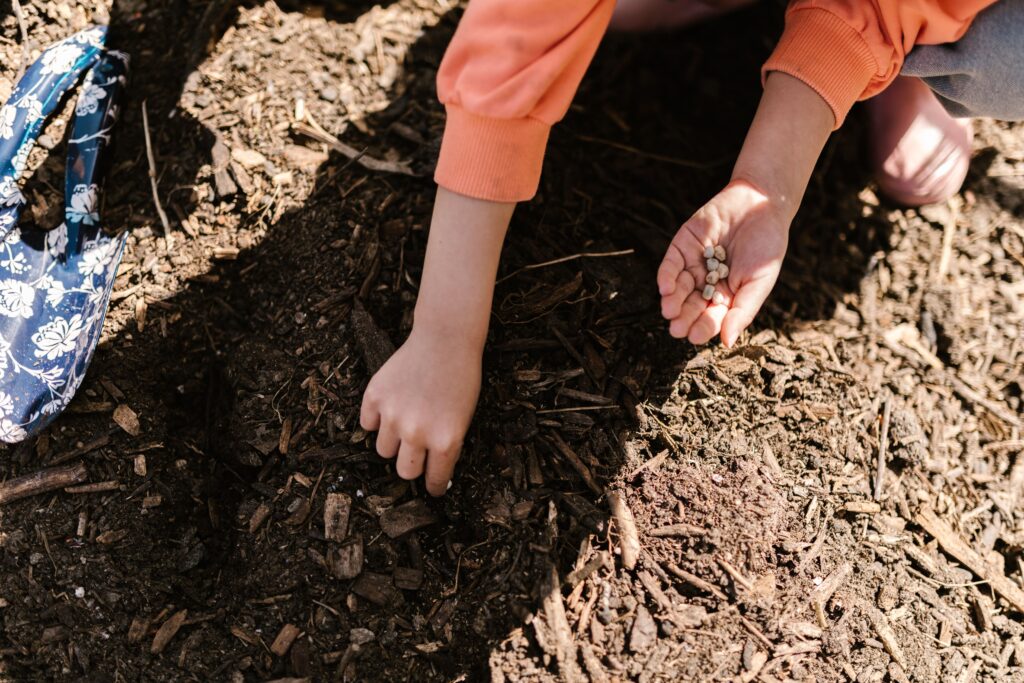
In organic gardening, soil preparation is key to success. Organic gardeners aim to create healthy, nutrient-rich soil that will support plant growth and prevent diseases. Here are some tips for soil preparation in organic gardening:
- Test your soil: Testing your soil is the first step to determining what nutrients your soil is lacking. You can purchase a soil test kit or send a sample to a soil lab for analysis. The results will indicate what amendments you need to add to your soil to create the right balance of nutrients for your plants.
- Add organic matter: Organic matter is crucial to improving soil structure and fertility. Compost, manure, leaves, and grass clippings are all examples of organic matter that can be added to your soil. Organic matter improves soil drainage, water-holding capacity, and nutrient availability.
- Avoid synthetic fertilizers: Organic gardeners do not use synthetic fertilizers, which can harm soil health and the environment. Instead, organic gardeners rely on natural sources of nutrients, such as compost, cover crops, and bone meal.
- Use natural soil amendments: In addition to organic matter, natural soil amendments such as rock phosphate, greensand, and kelp meal can provide essential nutrients for your plants. These amendments slowly release nutrients into the soil over time, providing a steady supply of food for your plants.
- Practice crop rotation: Crop rotation is the practice of planting different crops in the same area each year to prevent soil-borne diseases and pests from building up. This helps maintain soil health and fertility over time.
By following these tips, you can create healthy, nutrient-rich soil that will support the growth of strong, healthy plants in your organic garden.
Plant Selection for Organic Gardening
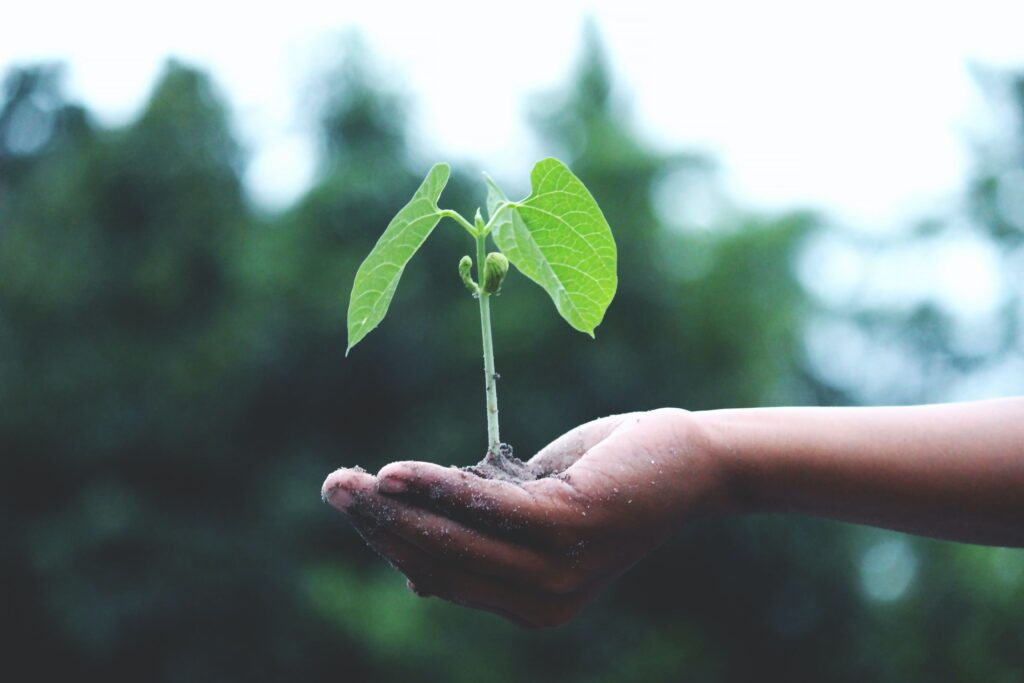
Choosing the right plants is essential for the success of your organic garden. When selecting plants, it’s important to consider the climate and soil conditions in your area. You should also choose plants that are disease-resistant, pest-resistant, and well-suited to the growing conditions in your garden.
Here are some tips for plant selection in organic gardening:
- Choose native plants: Native plants are well-suited to the climate and soil conditions in your area, which means they are more likely to thrive and require less maintenance. Native plants also provide habitat for local wildlife and help support biodiversity.
- Choose disease-resistant plants: Look for plants that are resistant to common diseases in your area. This can help prevent the spread of disease in your garden and reduce the need for chemical treatments.
- Choose pest-resistant plants: Similarly, choose plants that are resistant to common pests in your area. This can help reduce the need for chemical pesticides and promote natural pest control methods.
- Choose the right variety: When selecting plants, make sure to choose varieties that are well-suited to the growing conditions in your garden. For example, if you have a shady garden, choose plants that thrive in low-light conditions.
- Consider companion planting: Companion planting involves planting different plants together that benefit each other. For example, planting marigolds near tomatoes can help repel pests, while planting beans near corn can help fix nitrogen in the soil.
By following these tips for plant selection, you can help ensure that your organic garden is filled with healthy, thriving plants that are well-suited to your growing conditions and require minimal maintenance.
Natural Pest Control Methods for Organic Gardening
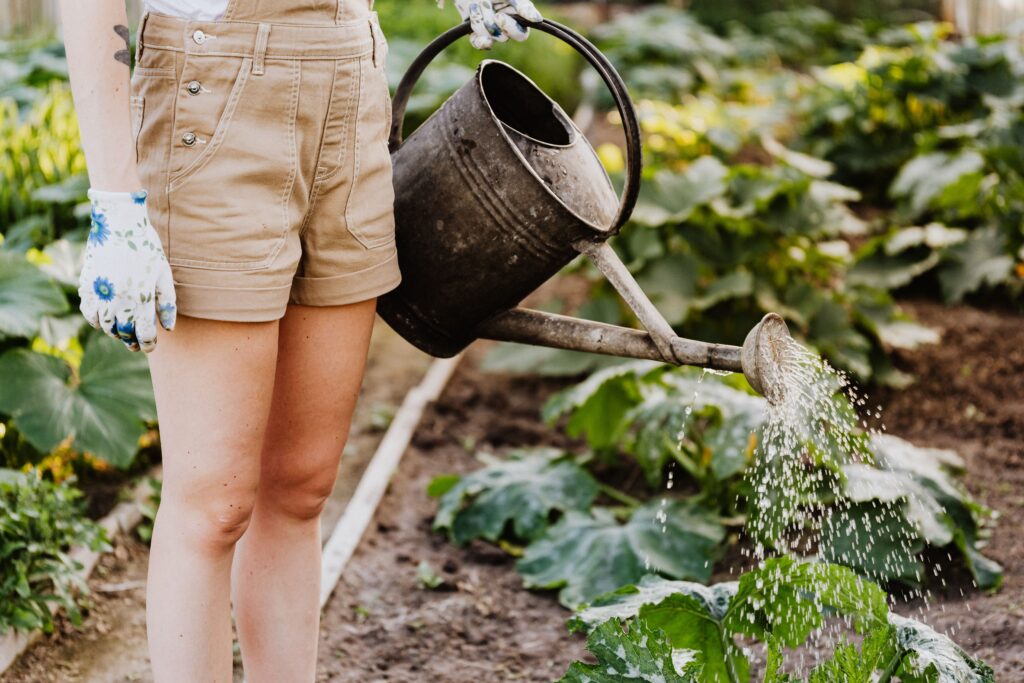
One of the biggest challenges in organic gardening is controlling pests without the use of synthetic pesticides. Fortunately, many natural pest control methods can be used to keep pests under control and protect your plants.
Here are some natural pest control methods for organic gardening:
- Companion planting: As mentioned earlier, companion planting involves planting different plants together that benefit each other. Some plants repel pests, while others attract beneficial insects that prey on pests. For example, planting marigolds near vegetables can help repel pests, while planting dill or fennel can attract beneficial insects such as ladybugs and lacewings.
- Handpicking: Removing pests by hand is a simple but effective way to control pest populations in small gardens. Inspect your plants regularly for pests and remove any you find by hand.
- Insecticidal soap: Insecticidal soap is a natural, non-toxic way to control soft-bodied insects such as aphids and spider mites. It works by suffocating the pests and is safe to use on most plants.
- Neem oil: Neem oil is a natural oil extracted from the neem tree that has insecticidal properties. It can be used to control a wide range of pests, including aphids, whiteflies, and mealybugs.
- Bacillus thuringiensis (BT): BT is a naturally occurring soil bacteria that can be used to control certain insect pests, such as caterpillars and mosquito larvae. It is safe to use on most plants and does not harm beneficial insects.
By using these natural pest control methods, you can keep your garden free from harmful pests while maintaining the health and vitality of your plants in an organic and environmentally friendly way.
Tips for Organic Vegetable Gardening
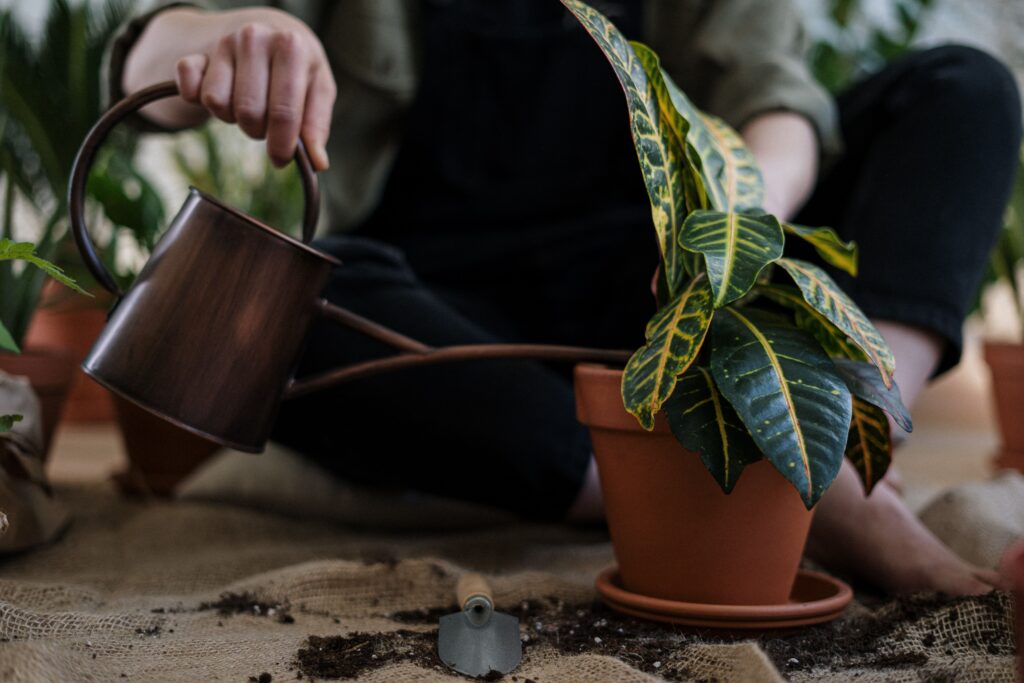
Organic vegetable gardening can be a rewarding and satisfying experience. By growing your vegetables, you can enjoy fresh, healthy produce that is free from synthetic pesticides and fertilizers. Here are some tips for successful organic vegetable gardening:
- Start with healthy soil: Good soil is the foundation of a healthy garden. Make sure your soil is rich in organic matter and has a pH level that is suitable for the vegetables you want to grow.
- Use organic fertilizers: Organic fertilizers such as compost, manure, and fish emulsion are a great way to provide your plants with the nutrients they need to grow and thrive.
- Mulch your garden: Mulching helps to retain moisture in the soil, suppress weeds, and regulate soil temperature. Use organic mulches such as straw, leaves, or grass clippings.
- Water your garden properly: Vegetables need consistent moisture to grow properly, so make sure to water your garden regularly. Water deeply and infrequently to encourage deep root growth.
- Practice crop rotation: Crop rotation involves planting different vegetables in different areas of your garden each year. This helps to prevent soil-borne diseases and nutrient depletion.
- Control pests naturally: As we mentioned earlier, natural pests control methods such as companion planting and handpicking can be used to keep pests under control in your vegetable garden.
By following these tips, you can grow a thriving organic vegetable garden that provides you with healthy, delicious produce all season long.
Organic Fruit Tree Care
Growing fruit trees organically can be a challenging but rewarding experience. Here are some tips for caring for your organic fruit trees:
- Prune your trees regularly: Pruning helps to keep your fruit trees healthy and productive. Remove any dead, diseased, or damaged branches, and prune for shape and size control.
- Provide proper nutrition: Organic fertilizers such as compost, manure, and bone meal can help provide your fruit trees with the nutrients they need to thrive. Apply fertilizer in the early spring and again in the fall.
- Water your trees properly: Fruit trees need consistent moisture to produce healthy fruit. Water deeply and infrequently to encourage deep root growth.
- Control pests naturally: Natural pest control methods such as insecticidal soap, neem oil, and handpicking can be used to control pests on your fruit trees. It’s also important to prune your trees regularly to remove any diseased or infested branches.
- Prevent disease: Preventing disease is key to keeping your fruit trees healthy. Practice good sanitation by removing any fallen fruit or debris from around your trees. Avoid over-watering or over-fertilizing, which can lead to fungal diseases.
By following these tips and practicing good fruit tree care, you can enjoy healthy, delicious fruit from your organic fruit trees for many years to come.
Harvesting and Storing Organic Produce
Harvesting and storing your organic produce properly is essential to ensuring that it stays fresh and delicious. Here are some tips for harvesting and storing your organic fruits and vegetables:
- Harvest at the right time: Each fruit and vegetable has its own ideal time for harvest. Harvesting at the right time ensures that your product is at its peak flavor and nutrition.
- Handle with care: Be gentle when harvesting your produce to avoid damaging it. Use sharp scissors or pruning shears to cut fruits and vegetables from the plant, and handle them carefully to avoid bruising.
- Clean your produce: Before storing your produce, make sure to clean it thoroughly to remove any dirt or debris. You can use a soft brush or a damp cloth to clean your fruits and vegetables.
- Store properly: Different fruits and vegetables have different storage requirements. Some should be stored in a cool, dry place, while others need to be stored in the refrigerator. Make sure to store your products in the proper conditions to ensure that it stays fresh and flavorful.
- Use it or preserve it: Organic produce can spoil quickly, so it’s important to use it as soon as possible. If you can’t use it right away, consider preserving it by canning, freezing, or dehydrating it.
By following these tips, you can enjoy your organic produce at its freshest and most delicious. Harvesting and storing your fruits and vegetables properly is an important part of the organic gardening process.
Composting for Organic Gardening
Composting is an essential part of organic gardening. It involves breaking down organic materials such as food scraps, yard waste, and other organic matter into a nutrient-rich soil amendment. Here are some tips for composting in your organic garden:
- Choose the right container: You can compost in a variety of containers, from a simple pile in your yard to a fancy compost bin. Choose a container that fits your needs and budget.
- Add the right ingredients: Composting requires a mix of “brown” materials such as dry leaves and straw and “green” materials such as fruit and vegetable scraps and grass clippings. Aim for a ratio of roughly 3 parts brown to 1 part green.
- Keep it moist: Composting requires moisture to help the materials break down. Aim for a damp but not soggy pile.
- Turn it regularly: Turning your compost pile helps to mix the materials and promote decomposition. Aim to turn your pile every 1-2 weeks.
- Use it in your garden: Once your compost is finished, use it to amend your soil. It can help to improve soil structure, retain moisture, and provide nutrients to your plants.
Composting is a great way to reduce waste, improve soil health, and promote sustainable gardening practices. By following these tips, you can create a healthy and productive organic garden using compost.
Best Practices for Maintaining an Organic Garden
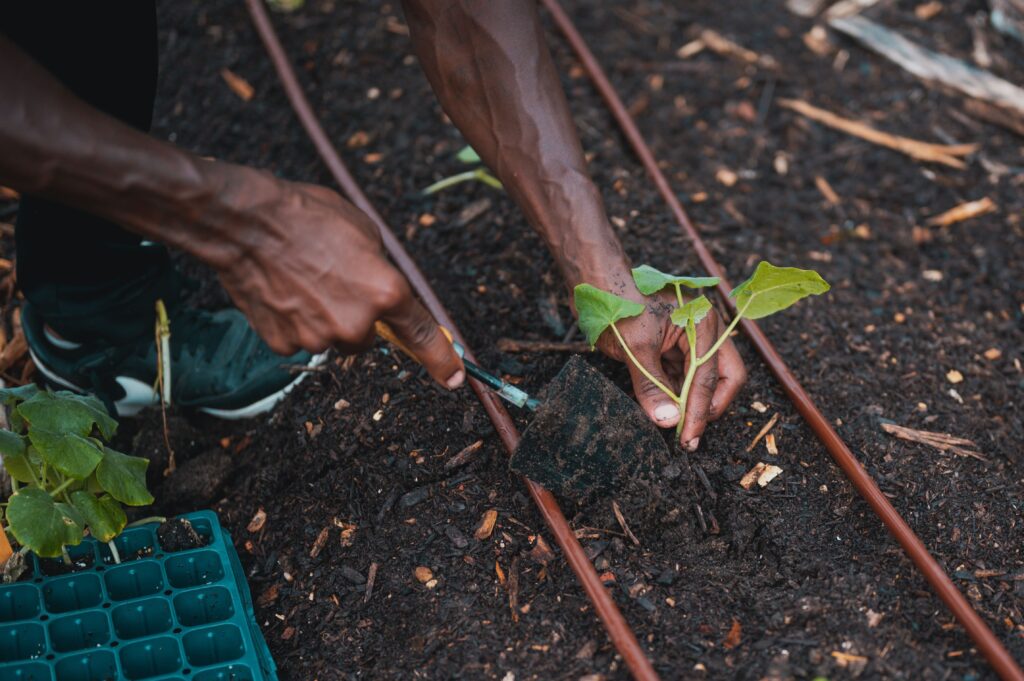
Maintaining an organic garden requires ongoing effort and attention. Here are some best practices to keep in mind to ensure that your organic garden stays healthy and productive:
- Practice crop rotation: Rotating your crops from year to year can help to prevent soil-borne diseases and pests.
- Use companion planting: Companion planting involves planting certain crops together to improve their growth and deter pests. For example, planting marigolds alongside your vegetables can help to repel pests.
- Mulch your garden: Mulching your garden can help to suppress weeds, retain moisture, and improve soil health.
- Water wisely: Watering your garden deeply and infrequently is more effective than frequent shallow watering. Aim to water in the morning or evening to reduce evaporation.
- Use natural fertilizers: Avoid chemical fertilizers and instead use natural fertilizers such as compost, manure, or seaweed.
- Practice integrated pest management: Integrated pest management involves using a combination of methods to control pests, including physical barriers, natural predators, and traps.
By following these best practices, you can maintain a healthy and productive organic garden. Organic gardening is not only good for the environment, but it can also provide you with fresh, delicious produce.
Conclusion
In conclusion, organic gardening can be a rewarding and fulfilling hobby that not only benefits your health and wellbeing but also the environment. By following the tips and tricks we’ve discussed in this article, you can create a thriving organic garden that produces bountiful yields of fresh, delicious produce.
We hope that this article has provided you with valuable insights into the world of organic gardening and inspired you to try out some of the DIY and crafts featured on our website. We encourage you to check out our other articles and resources on gardening, home decor, furniture, and more.
If you’re interested in sustainable living, you’ll love our article on 5 DIY Eco-Friendly Home Decor Ideas. And if you’re looking for more easy and affordable decorating tips, our Top 10 Easy DIY Home Decor Ideas are a must-read. We’re always sharing new and innovative ideas to help you elevate your home, so stay tuned for more!
If you found this article helpful, please share it with your friends and family. We welcome your feedback and would love to hear your thoughts on the article. Please feel free to leave your comments and suggestions in the comment section below.
Thank you for reading and happy gardening!
You can also read
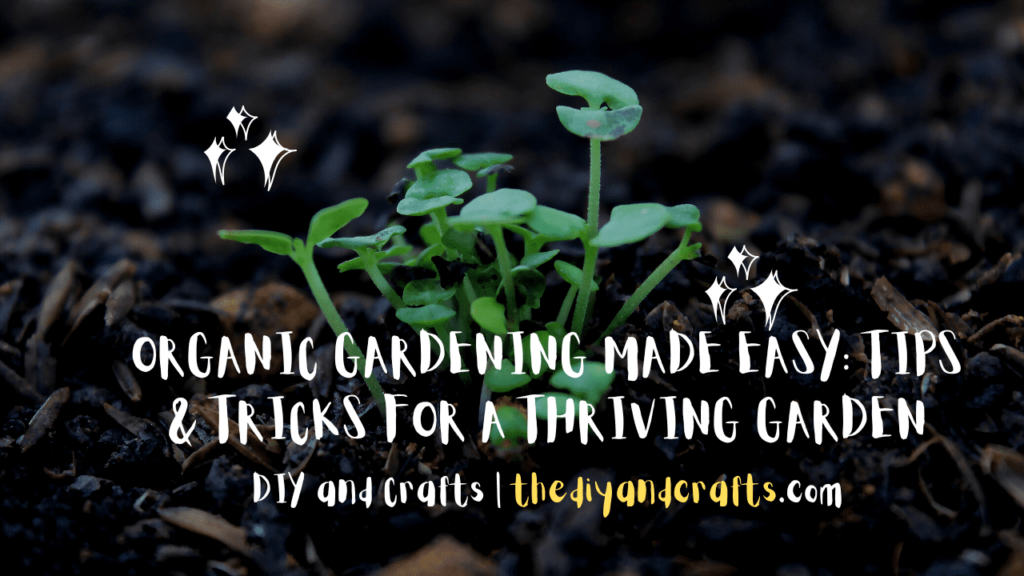
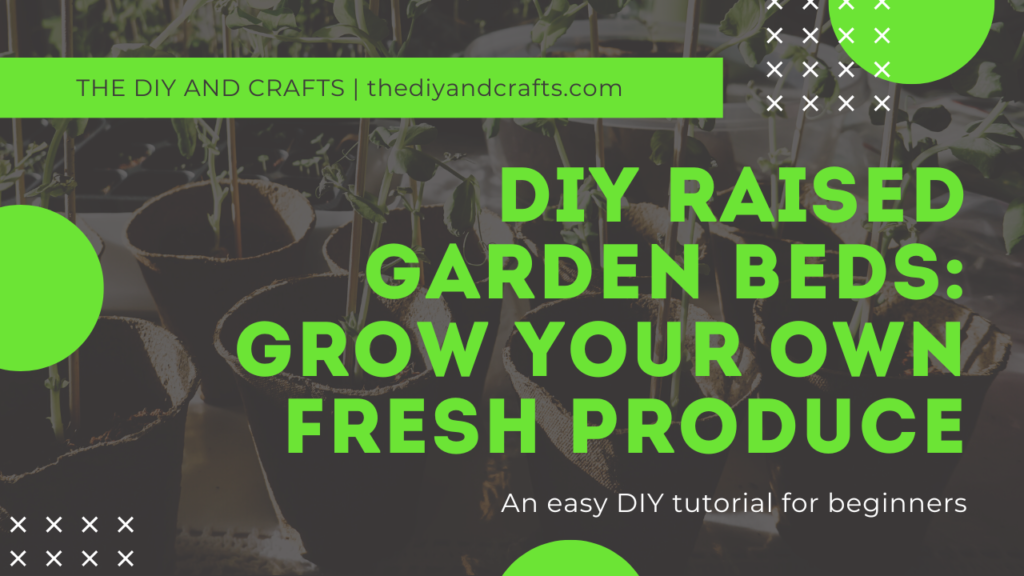
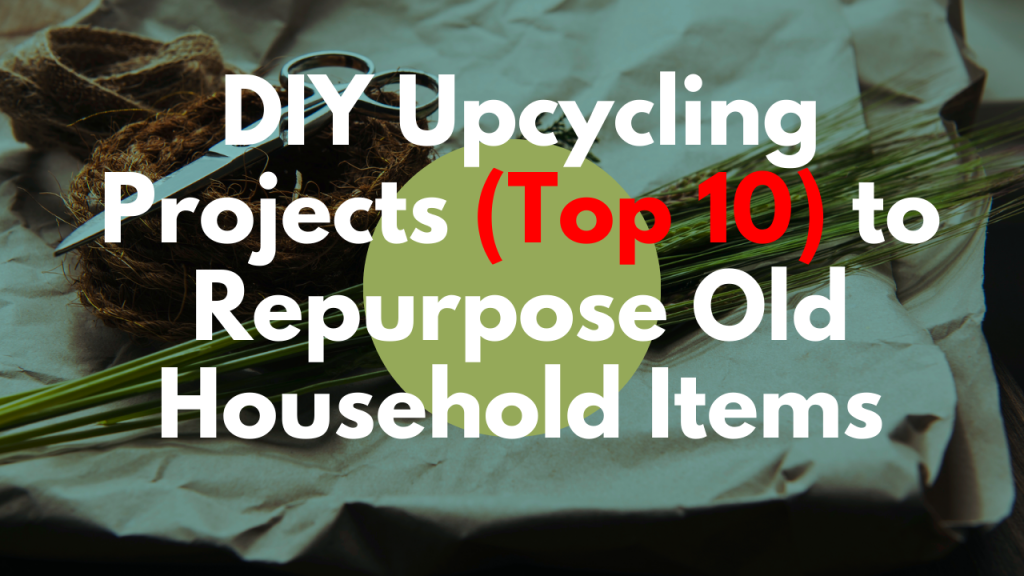
Pingback: 5 DIY Eco-Friendly Home Decor Ideas - The DIY and Crafts
Pingback: DIY Home Decor Ideas for the Holidays - The DIY and Crafts
Pingback: Mason Jar Herb Garden - How to Grow Your Amazing Fresh Herbs at Home in 2023
Pingback: Bottle Vase Magic: Transforming Ordinary Bottles Into Stunning Home Decor in 2023!
Pingback: DIY Magazine Wall Art Projects You Can't Resist (Art on a Budget in 2023)